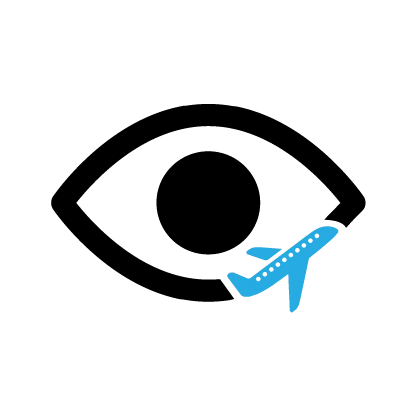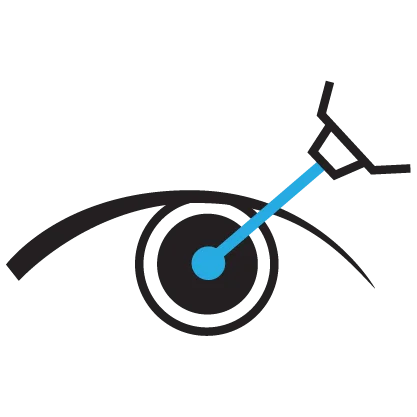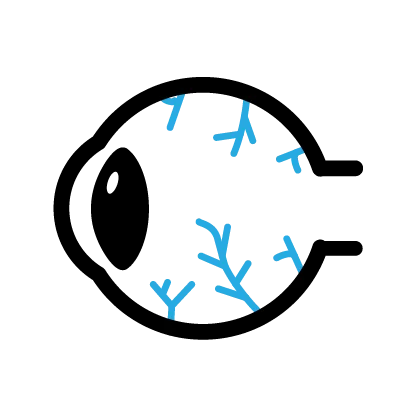About Paediatrics Ophthalmology service
Maintaining your child’s overall health requires regular visits to a paediatric ophthalmologist. While immunisations and routine screenings for hearing, weight, and growth charts are typically top of mind for most parents, it’s important not to overlook the significance of your child’s visual health.
Eye conditions in children often do not display clear signs or symptoms, and Children cannot often effectively communicate any issues they may be experiencing with their eyesight, and they might even perceive their blurry vision as normal. This means regular eye tests with a paediatric ophthalmologist specialist are the only way to diagnose potential issues.
In cases with no immediate signs of problems and no significant family history of squint, lazy eye or severe childhood eye conditions, we recommend an annual eye examination from a paediatric ophthalmologist around 3-4 years old. Once these children reach nine and upwards, we generally advise an eye examination every two years unless your children’s eye doctor advises otherwise.

Commonly seen conditions diagnosed by children’s eye doctors include:
- Squints: A condition known as strabismus, where the eyes point in different directions. One eye may turn inwards, outwards, upwards, or downwards while the other looks forward. A squint can cause blurred or double vision.
- Paediatric Cataracts: A condition in which a child’s usually clear lens becomes cloudy. If left untreated, paediatric cataracts can impair normal vision development and lead to vision loss.
- Paediatric Glaucoma: This is a rare condition in children, often diagnosed in infancy or early childhood. It involves high pressure in the eyes that can damage the optic nerve, and if left untreated, it can result in blindness.
- Refractive Errors: These are common eye disorders causing blurry vision due to the shape of the eye preventing light from focusing directly on the retina. The main types of refractive errors are near-sightedness (myopia), far-sightedness (hyperopia), and astigmatism (distorted vision).
- Retinopathy of Prematurity: Retinopathy of Prematurity (also called ROP) is an eye disease that affects many premature babies. ROP happens when a baby’s retina doesn’t fully develop in the weeks after birth. As a consequence of premature birth, abnormal blood vessels are formed, which are fragile and can leak, scarring the retina and pulling it out of position. This causes a retinal detachment, which is the main cause of visual impairment and blindness in ROP.
- Amblyopia: Amblyopia, also known as a ‘lazy eye’, is a childhood condition where a child’s eyesight does not develop in the way it should. The problem is usually just in one eye but can sometimes affect both. If a child has weaker vision in one eye, the brain prefers to use the stronger eye, and therefore the visual pathway is not stimulated enough, and amblyopia develops.
At Moorfields Eye Hospitals, our paediatric eye specialists in Dubai and Abu Dhabi offer comprehensive services for diagnosing, managing and treating all children’s eye conditions. Our team of specialised paediatric ophthalmologists, optometrists and orthoptists are dedicated to preserving and enhancing the vision of our youngest patients.
Comprehensive Assessments
We offer a comprehensive range of eye care assessments, diagnostics, surgical and non-surgical treatment services. Assessment services: (evaluation examinations may differ depending on outcome of consultation) (expandable links below)
- General Health Assessment
- Optometry assessment
- Orthoptic assessment
- Consultation with Paediatric Ophthalmology Consultant
Conditions & Treatment
Paediatric Cataract
About Paediatric Cataract
We all have a natural lens inside the eye that helps us to see clearly. The lens should be transparent like a clean crystal but a cataract makes the lens cloudy. Paediatric cataract is a condition in which the lens of the eye is cloudy, either partially or completely. It can be a congenital condition, present at the time of birth or acquired later, developing after the birth. A cloudy lens can occur in one eye (unilateral) or both eyes (bilateral).Paediatric Cataract
About Paediatric Cataract
We all have a natural lens inside the eye that helps us to see clearly. The lens should be transparent like a clean crystal but a cataract makes the lens cloudy. Paediatric cataract is a condition in which the lens of the eye is cloudy, either partially or completely. It can be a congenital condition, present at the time of birth or acquired later, developing after the birth. A cloudy lens can occur in one eye (unilateral) or both eyes (bilateral).Progressive Myopia
About Progressive Myopia
Myopia or short-sightedness is the difficulty in seeing objects far away. This difficulty is because the light is not correctly focusing on the retina. It is a common eye condition and can progress as the child grows.Progressive Myopia
About Progressive Myopia
Myopia or short-sightedness is the difficulty in seeing objects far away. This difficulty is because the light is not correctly focusing on the retina. It is a common eye condition and can progress as the child grows.Amblyopia
About Amblyopia
Amblyopia, also known as a ‘lazy eye’, is a childhood condition where a child’s eyesight does not develop in the way it should. The problem is usually just in one eye but can sometimes affect both. If a child has weaker vision in one eye, the brain prefers to use the stronger eye and therefore the visual pathway is not stimulated enough and amblyopia develops.
Amblyopia
About Amblyopia
Amblyopia, also known as a ‘lazy eye’, is a childhood condition where a child’s eyesight does not develop in the way it should. The problem is usually just in one eye but can sometimes affect both. If a child has weaker vision in one eye, the brain prefers to use the stronger eye and therefore the visual pathway is not stimulated enough and amblyopia develops.
Children’s Eye Health
About Children’s Eye Health
Many parents will be familiar with the importance of immunisations, routine screenings such as hearing tests, weight, and growth charts for their children, not to mention dental health when the time arises, but what about their vision?
Some eye conditions do not display any signs or symptoms, so the only way to know for sure is to take your child for a sight test. In cases where there is no perceived problem and no significant family history of squint, lazy eye or serious eye conditions in childhood, we recommend an annual eye examination from around 3-4yrs old. Once these children reach nine and upwards, generally we advise an eye examination every two years unless your Ophthalmologist has advised otherwise.
Children’s Eye Health
About Children’s Eye Health
Many parents will be familiar with the importance of immunisations, routine screenings such as hearing tests, weight, and growth charts for their children, not to mention dental health when the time arises, but what about their vision?
Some eye conditions do not display any signs or symptoms, so the only way to know for sure is to take your child for a sight test. In cases where there is no perceived problem and no significant family history of squint, lazy eye or serious eye conditions in childhood, we recommend an annual eye examination from around 3-4yrs old. Once these children reach nine and upwards, generally we advise an eye examination every two years unless your Ophthalmologist has advised otherwise.
Common Childhood Disorders
About Common Childhood Disorders
Strabismus/Squint
This condition occurs when one or both eyes are misaligned and the eyes do not point in the same direction. The eyes may turn inwards (crossed eyes), outwards (wall eyed), up and down or a combination of these. Squint effects around 2% of children, can be present at birth or early infancy, and may be caused by a muscle imbalance or a need for glasses. Treatment may involve the use of glasses, orthoptic therapy, or eye muscle surgery.
Common Childhood Disorders
About Common Childhood Disorders
Strabismus/Squint
This condition occurs when one or both eyes are misaligned and the eyes do not point in the same direction. The eyes may turn inwards (crossed eyes), outwards (wall eyed), up and down or a combination of these. Squint effects around 2% of children, can be present at birth or early infancy, and may be caused by a muscle imbalance or a need for glasses. Treatment may involve the use of glasses, orthoptic therapy, or eye muscle surgery.
Lacrimal Probing
About Lacrimal Probing
The tear duct is a channel/passage which runs from a tiny opening in the medial lids through the bone to the inside of the nose, and drains the tears and mucus the eye produces. It should open just before or just after birth but sometimes remains blocked for a considerable time after that, causing watering and discharge from the eye. It is harmless, and does not affect the health of the eye or the vision, although it can make the eyelids red and sore and slightly increases the frequency of infective conjunctivitis. The only potentially serious consequence is acute dacryocystitis, which is very unusual.
Most cases resolve with time and can be safely left to do so. Intervention is not normally considered under 1 year and even after that time, spontaneous resolution is still the most likely scenario. The procedure does not have to be done and the decision is the parents. The likelihood of probing success starts to decrease markedly after age 4 years.
The aim of lacrimal probing is to open or widen the tear duct in order to reduce or eliminate watering and discharge
Lacrimal Probing
About Lacrimal Probing
The tear duct is a channel/passage which runs from a tiny opening in the medial lids through the bone to the inside of the nose, and drains the tears and mucus the eye produces. It should open just before or just after birth but sometimes remains blocked for a considerable time after that, causing watering and discharge from the eye. It is harmless, and does not affect the health of the eye or the vision, although it can make the eyelids red and sore and slightly increases the frequency of infective conjunctivitis. The only potentially serious consequence is acute dacryocystitis, which is very unusual.
Most cases resolve with time and can be safely left to do so. Intervention is not normally considered under 1 year and even after that time, spontaneous resolution is still the most likely scenario. The procedure does not have to be done and the decision is the parents. The likelihood of probing success starts to decrease markedly after age 4 years.
The aim of lacrimal probing is to open or widen the tear duct in order to reduce or eliminate watering and discharge
Paediatric Squint
About Paediatric Squint (Strabismus)
Squint is a term used within ophthalmology for a misalignment between the two eyes. The medical term for this is ‘strabismus’. While one eye looks straight, a person can have one eye that turns inwards (esotropia), outwards (exotropia), upwards (hypertropia) or downwards (hypotropia). A child may be born with squint or it may be something that develops with age. Squints can appear suddenly or develop slowly, they can be constant or may only be present intermittently.
Paediatric Squint
About Paediatric Squint (Strabismus)
Squint is a term used within ophthalmology for a misalignment between the two eyes. The medical term for this is ‘strabismus’. While one eye looks straight, a person can have one eye that turns inwards (esotropia), outwards (exotropia), upwards (hypertropia) or downwards (hypotropia). A child may be born with squint or it may be something that develops with age. Squints can appear suddenly or develop slowly, they can be constant or may only be present intermittently.
Retinopathy of Prematurity (ROP)
About Retinopathy of Prematurity (ROP)
Retinopathy of Prematurity (also called ROP) is an eye disease that affects many premature babies. ROP happens when a baby’s retina doesn’t fully develop in the weeks after birth. As a consequence of premature birth, abnormal blood vessels are formed, which are fragile and can leak, scarring the retina and pulling it out of position. This causes a retinal detachment, which is the main cause of visual impairment and blindness in ROP. Some cases of ROP are mild and correct themselves, however, others require surgery to prevent vision loss or blindness. Surgery involves using a laser or other means to stop the growth of the abnormal blood vessels, making sure they don't pull on the retina. As ROP has no signs or symptoms, the only way to detect it is through an eye examination by an ophthalmologist.
Retinopathy of Prematurity (ROP)
About Retinopathy of Prematurity (ROP)
Retinopathy of Prematurity (also called ROP) is an eye disease that affects many premature babies. ROP happens when a baby’s retina doesn’t fully develop in the weeks after birth. As a consequence of premature birth, abnormal blood vessels are formed, which are fragile and can leak, scarring the retina and pulling it out of position. This causes a retinal detachment, which is the main cause of visual impairment and blindness in ROP. Some cases of ROP are mild and correct themselves, however, others require surgery to prevent vision loss or blindness. Surgery involves using a laser or other means to stop the growth of the abnormal blood vessels, making sure they don't pull on the retina. As ROP has no signs or symptoms, the only way to detect it is through an eye examination by an ophthalmologist.
Red Reflex Assessment – Early Eye Health Screening for Children
About Red reflex Assessment
The red reflex test is vital, non-invasive test that can identify early warning signs of serious eye conditions in children, such as cataract (white water), glaucoma (blue water) and retinoblastoma (childhood eye cancer) and high refractive errors. Infants or children in whom parents or other observers describe a history suspicious for the presence of leukocoria (a white pupil reflex) in one or both eyes should be examined because small retinoblastoma tumors or other serious lesions may present in a subtle fashion.
Red Reflex Assessment – Early Eye Health Screening for Children
About Red reflex Assessment
The red reflex test is vital, non-invasive test that can identify early warning signs of serious eye conditions in children, such as cataract (white water), glaucoma (blue water) and retinoblastoma (childhood eye cancer) and high refractive errors. Infants or children in whom parents or other observers describe a history suspicious for the presence of leukocoria (a white pupil reflex) in one or both eyes should be examined because small retinoblastoma tumors or other serious lesions may present in a subtle fashion.
Request an Appointment
















